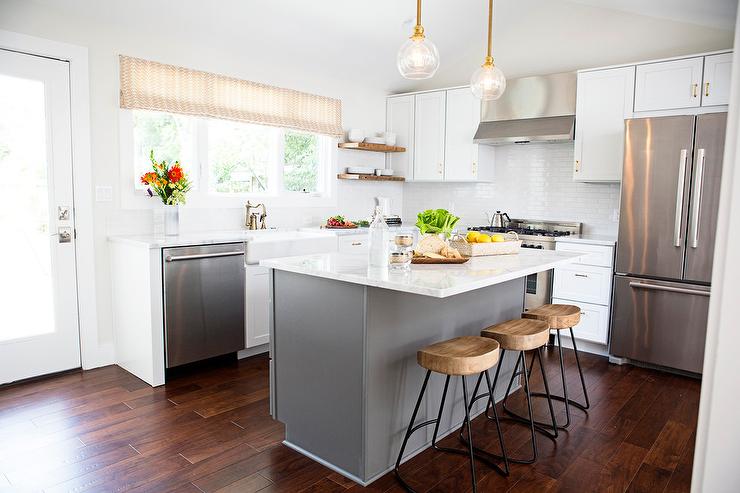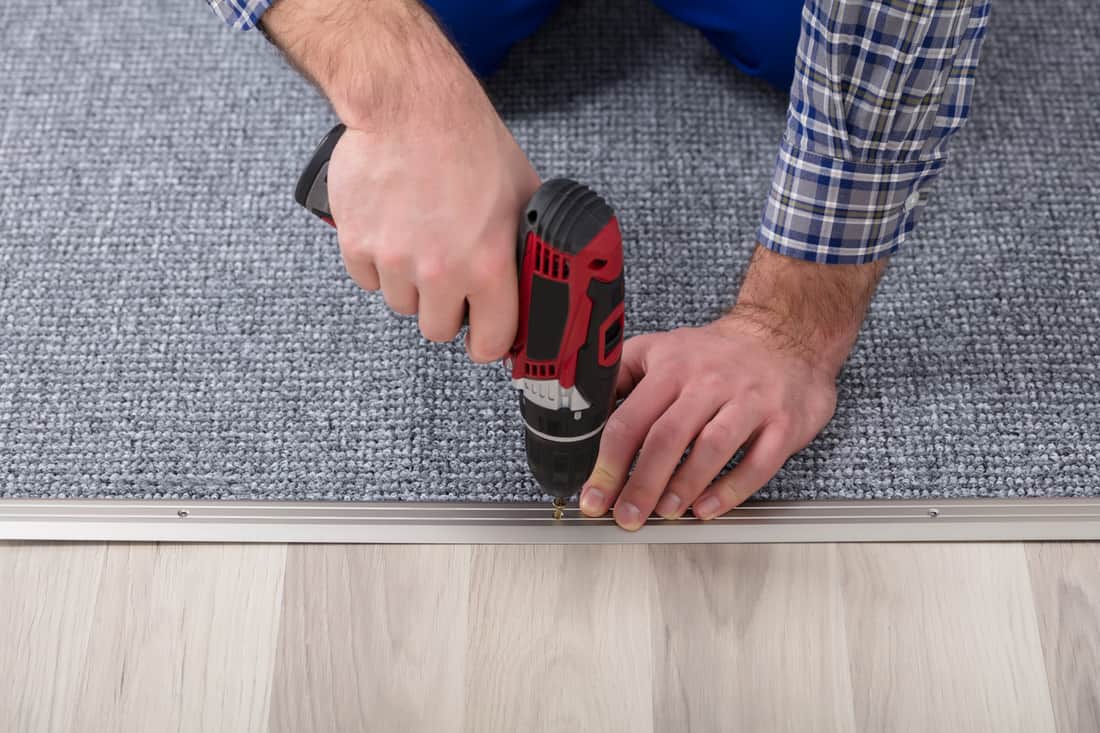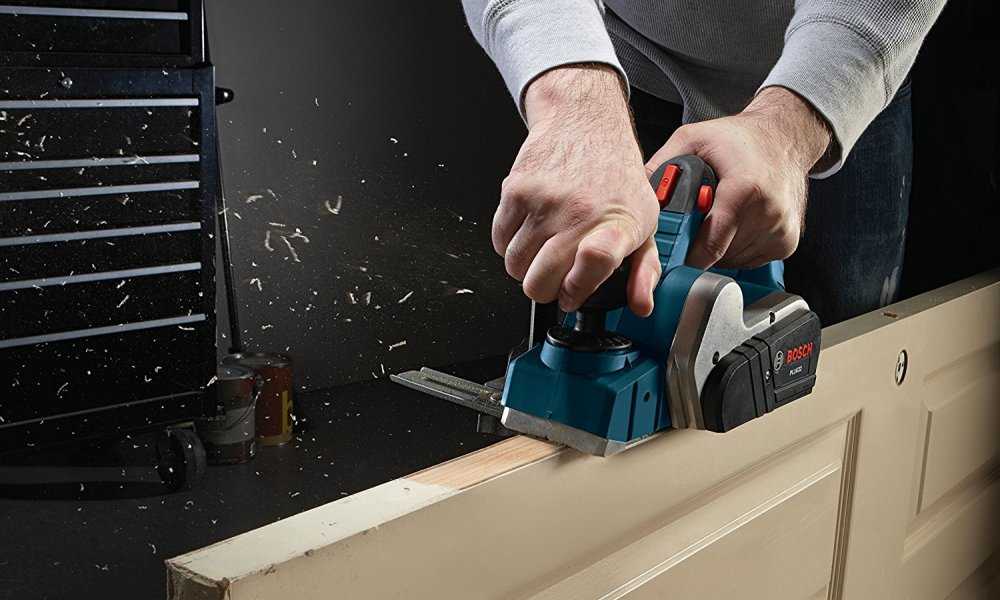Countertop overhang is a trend that has been gaining popularity in the last few years. It’s an innovative way to decorate your kitchen without having to change anything else.
The kitchen countertop overhang can be made of different materials, but one of the most popular is wood. It comes in many colors and patterns, making it easy for you to choose something unique that perfectly suits your needs and design style.
We have put together this guide on how to choose the perfect kitchen countertop for your home. Whether you are looking for ideas or want some inspiration before starting any renovation process, this article will help you choose the right materials and patterns for your beautiful new countertops.
What Is Countertop Overhang?
The kitchen countertop overhang is a small extension from the countertop that usually goes over your cabinets’ front. Many people choose it to be made out of wood because it brings beauty and elegance to any kitchen or living room. Countertop overhang protects your drawers and cabinets from spills, crumbs, and dirt.
Factors to Consider when Choosing a Quartz Countertop Overhang
The Brand
Each brand has its design and how to install a kitchen island. Some offer a complete edge where your counter ends and the overhang begins, while some brands offer an extension on top of the cabinet, giving it a seamless look.
Material
It is all up to you, many people prefer wood because of its beauty and elegance; however, there are other people who prefer metal overhangs because of its sturdiness.
Budget
This depends on how much you are willing to spend on your countertop; if you know that it is available in the market with various price tags, consider the most expensive ones so you can have more options.
The Size of Your Kitchen Space
When it comes to choosing the size of your kitchen island, you have to consider the size of your kitchen space. If it is small, choose one which will only cover a part of your bar top instead of covering most of it if possible.
The Thickness of the Quartz Countertops
This is another factor you need to take into consideration. Thicker overhangs are sturdier than thin ones, so if you want something that will last longer and withstand heavy usage, then go for the thick ones.
Measurements of Your Overhang Extension
The measurement of the overhang extension is another important consideration you have to make. You don’t want to buy the wrong size, especially if your cabinets are built for your kitchen. The condition can be frustrating and will also require more expenses for you to get it fixed or replaced again.
Standard Countertop Overhang
Standard overhang is the most common overhang style, which can be found in most houses or buildings. It is usually 3/4 inches thick and is the same as the countertop thickness. While some countertops have different countertop overhang measurements, this is the number seen as the standard by homes.

Image caption: https://rightonbracket.com/
This type of countertop overhang provides a slight edge off the cabinetry base with a slight gap in-between. If you are using this type of overhang extension, your quartz overhang limit should be less than frameless or overlay cabinets to keep spills from cupboards and drawers.
Extended Overhang
This deals with how far the quartz countertop overhang extends from the edge of cabinets. The overhang should be within 1-11/16 inches for a standard 3/4 inch thick countertop quartz slab to 2-1/8 inches for an 8mm (5/16 inch) thick slab. Since this is the only difference in thickness by about 1/32 of an inch, it might not be worth having a slab that is “too thick” if it means you’ll go over the overhang cabinets by 1/32 of an inch.
This type of kitchen island exceeds the standard quartz countertop overhang rule. It is reserved for quartz countertops of standard thickness and often comes on more expensive stones like Cambria or Caesarstone. Also, you’ll need corbels for quartz countertops when selecting an extended overhang or any other type of quartz countertop overhang support.
Island Overhangs
An island overhang is simply an extended countertop overhang that hangs out in the kitchen further than the standard countertop overhang. The distance can vary, depending on your preference or design. This type of quartz over the range is one of the most popular because it provides a large surface for food preparation and serving.

Image caption: https://cdn.decorpad.com/
ccess Standards
If you’re looking for ADA-friendly space, then overhang measurements are different. You’ll need a minimum of 31” clear space in front of the counter and 38” from your floor. This is a standard for public bathrooms, but some designers don’t apply this to residential properties.
Quartz Countertop Support Option
Supporting quartz countertop overhangs is a simple task and can be done in several ways. This ensures your investment is safe and secure for years to come. Here are the additional support options for quartz overhangs.
Demi-Bullnose Overhang Style
This edging style is one of the most popular quartz countertop overhangs. Demi-bullnose is a 45-degree cut at the end of your countertop. It’s nice because it doesn’t leave a sharp edge. This also provides maximum support to the overhang. It softens your kitchen for a warmer, more inviting look. It’s also very easy to clean.
Corbels
Corbels are functional support that will help your quartz overhang stand strong. They’re placed under the end of your bar top to provide the support that’s invisible from a distance. They look like part of the design and create a very sleek appearance.
Whether you go for decorative or functional corbel support with your quartz or granite countertops, they will improve the appearance of your kitchen. Just make sure they fully support the weight of the quartz countertop overhangs. Do not install them far out from the wall to ensure they will properly support your quartz countertop.
Corbels are a nice touch for cabinets that have an overhang. They provide more kitchen storage space but still show off the craftsmanship of your cabinet design. You can also choose not to install corbels at all, which gives you even more space underneath.
Brackets
They’re more familiar with corbels, but they have a portion installed underneath the countertop to support it. They are really practical when you have a cabinet design with an overhang, but they don’t always look good. If you do not want the brackets to be visible in your kitchen, choose brackets that are hidden or can be installed underneath the edge of your quartz countertops.
Ogee Overhang Edge Style
If you’re looking to bring some sense of elegance into your kitchen, they work perfectly. They feature a deep, curved edge that provides a great deal of visual depth and shadow in your kitchen’s design. Because of its ornateness, it can feel large. This makes it suitable for large spaces, but not necessarily for small ones. It requires more effort to clean.
Basic Eased Overhang Edge Style
This style does not have an overhang. This creates a low profile feel to your countertop, and this is a good thing for small kitchens where other styles may look too big or oversized. Its softened edges provide safety while preventing damage.
This overhang style offers the most contemporary look and is the thickest of the three. This is a reflection of its strong visual element, but this also makes it easier to clean.
Straight Edge Style
This is the simplest style, with edges that are squared off and sharp without any curve. It offers a sleek modern feel while not being excessively fancy. If you want something simple but still elegant, this might be the right choice.
FAQs on Overhang Countertops
What is the normal countertop overhang?
The standard countertop overhang measurements width is usually 1 to 2 inches. You can apply this rule of thumb when you are choosing a countertop without taking the measurements.
How do I clean an overhanging counter?
It’s not difficult for cleaning because there are so many items on the market that target surfaces with an overhang. If you choose to use a cleaning product specifically made for an overhang, apply it in small quantities to not drip beneath the countertop.
Final Thought on Countertop Overhang
Countertops have always played a practical role in homes and kitchens, and they will continue to do so. This is why it’s crucial for homeowners to choose their countertops wisely and know the right ways of how to take care of them. Countertops provide you with a durable surface for cooking and a sturdy surface for any of your belongings. From preparing food to placing a water dispenser, countertops are there to make things easier and more convenient.
The post How to Choose Countertop Overhang appeared first on Kitchen Infinity.
Did you miss our previous article…
https://chefbuano.com/?p=154



